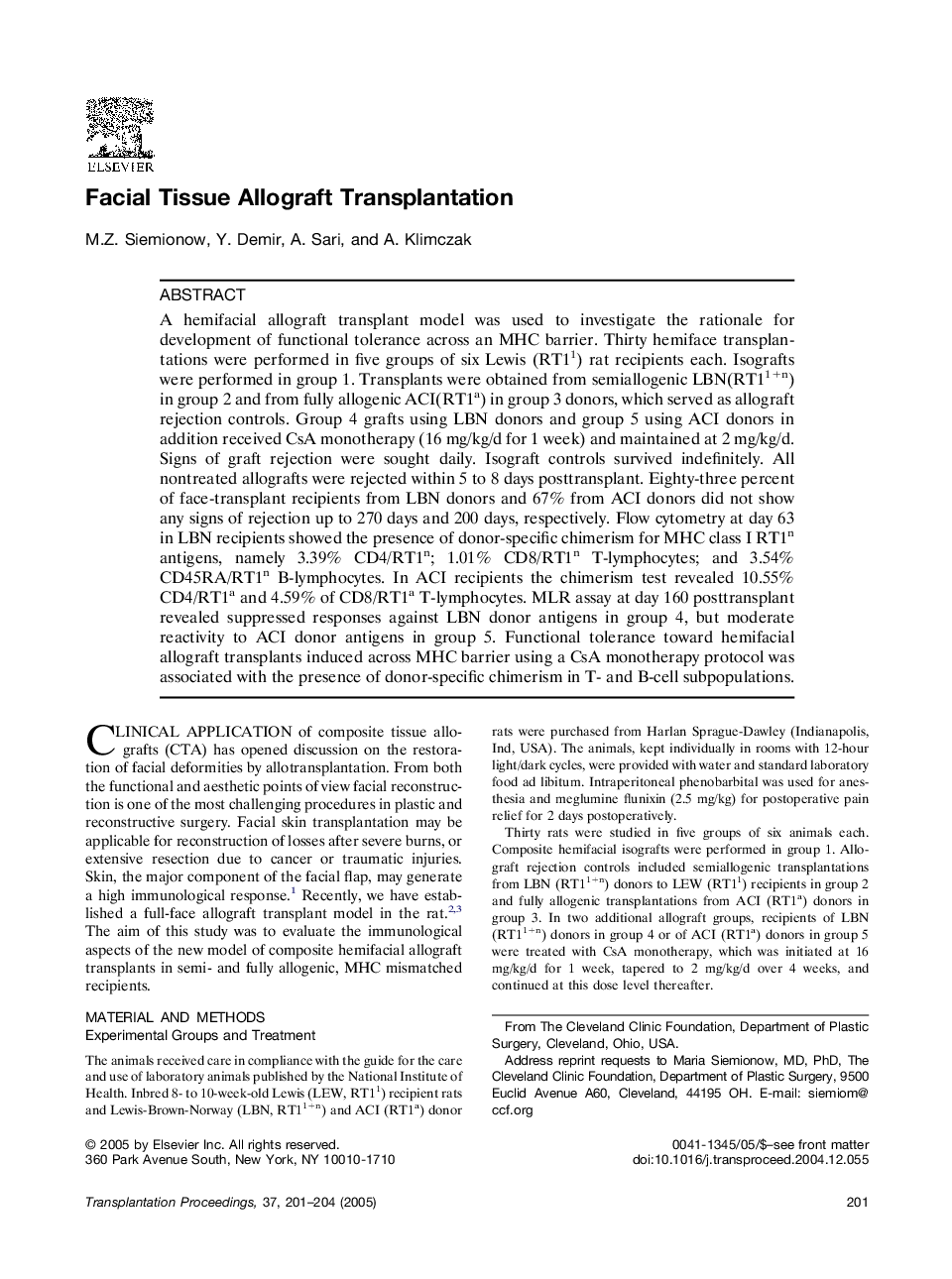| Article ID | Journal | Published Year | Pages | File Type |
|---|---|---|---|---|
| 9395574 | Transplantation Proceedings | 2005 | 4 Pages |
Abstract
A hemifacial allograft transplant model was used to investigate the rationale for development of functional tolerance across an MHC barrier. Thirty hemiface transplantations were performed in five groups of six Lewis (RT11) rat recipients each. Isografts were performed in group 1. Transplants were obtained from semiallogenic LBN(RT11+n) in group 2 and from fully allogenic ACI(RT1a) in group 3 donors, which served as allograft rejection controls. Group 4 grafts using LBN donors and group 5 using ACI donors in addition received CsA monotherapy (16 mg/kg/d for 1 week) and maintained at 2 mg/kg/d. Signs of graft rejection were sought daily. Isograft controls survived indefinitely. All nontreated allografts were rejected within 5 to 8 days posttransplant. Eighty-three percent of face-transplant recipients from LBN donors and 67% from ACI donors did not show any signs of rejection up to 270 days and 200 days, respectively. Flow cytometry at day 63 in LBN recipients showed the presence of donor-specific chimerism for MHC class I RT1n antigens, namely 3.39% CD4/RT1n; 1.01% CD8/RT1n T-lymphocytes; and 3.54% CD45RA/RT1n B-lymphocytes. In ACI recipients the chimerism test revealed 10.55% CD4/RT1a and 4.59% of CD8/RT1a T-lymphocytes. MLR assay at day 160 posttransplant revealed suppressed responses against LBN donor antigens in group 4, but moderate reactivity to ACI donor antigens in group 5. Functional tolerance toward hemifacial allograft transplants induced across MHC barrier using a CsA monotherapy protocol was associated with the presence of donor-specific chimerism in T- and B-cell subpopulations.
Related Topics
Health Sciences
Medicine and Dentistry
Surgery
Authors
M.Z. Siemionow, Y. Demir, A. Sari, A. Klimczak,
